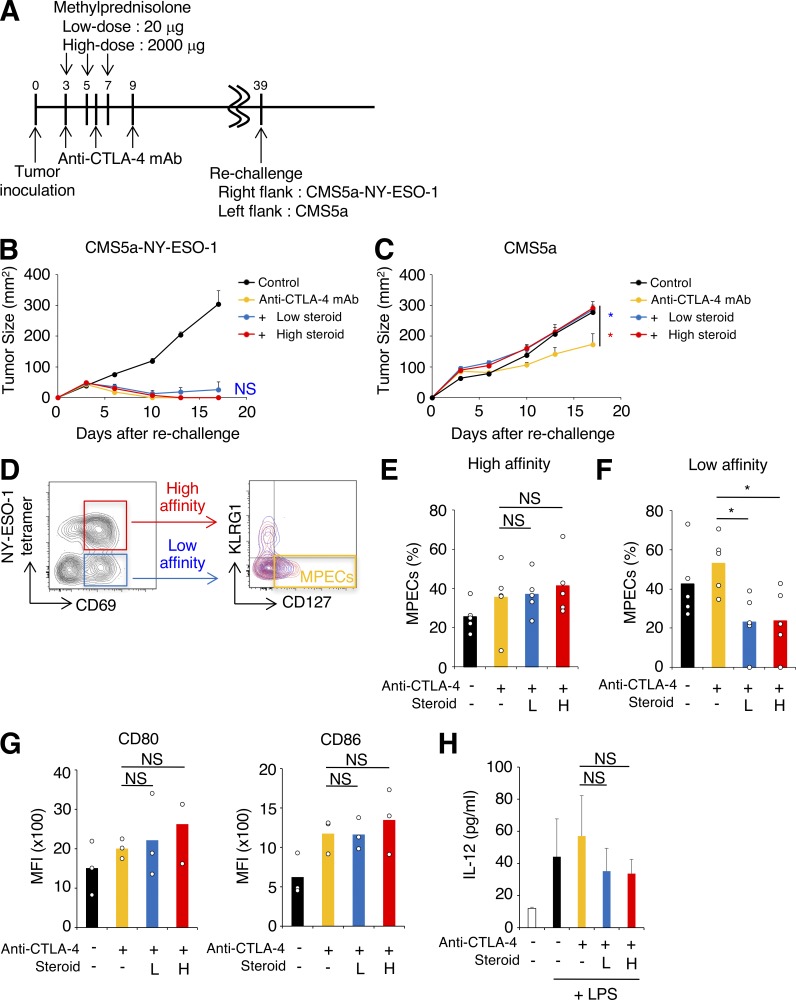Figure 3.
Early corticosteroid treatment impairs low-affinity memory T cell differentiation. (A–C) Experimental schema (A) and tumor growth curves (B: CMS5a-NY-ESO-1; C: CMS5a) of rechallenge to early corticosteroid-treated mice. CMS5a-NY-ESO-1–bearing mice were treated as in Fig. 1 A. Mice that had completely rejected the initial tumors were collected and secondarily inoculated with CMS5a-NY-ESO-1 and parental CMS5a (day 39). Control naive mice were injected with the same tumors (n = 5–10). (D) Gating strategy for flow-cytometric analysis of MPECs population in high-affinity (NY-ESO-1-tetramer+) and low-affinity (NY-ESO-1-tetramer−) CD8+ T cells at 10 d after tumor inoculation. (E and F) Percentages of MPECs in high- (E) and low-affinity (F) CD8+ T cells (n = 5). L, low dose; H, high dose. (G) Expression of maturation markers on DCs (CD11c+MHC class II+CD8α+) in tumor-draining lymph nodes 10 d after tumor inoculation (n = 3). MFI, mean fluorescence intensity. (H) Cytokine production (IL-12p70) by DCs. DCs from draining lymph nodes in CMS5a-NY-ESO-1–bearing mice were stimulated with LPS overnight. Cytokine production was measured by ELISA (n = 3 or 4). Data in B, C, and H are mean + SE. Statistical analysis by Dunnett’s test; *, P < 0.05. These experiments were performed independently three times with similar results.

